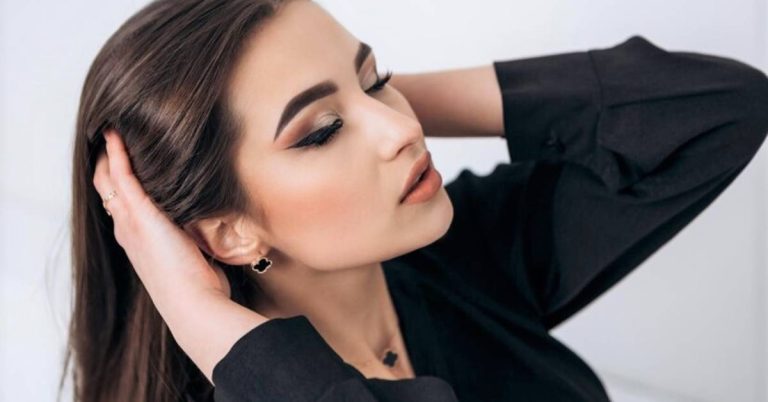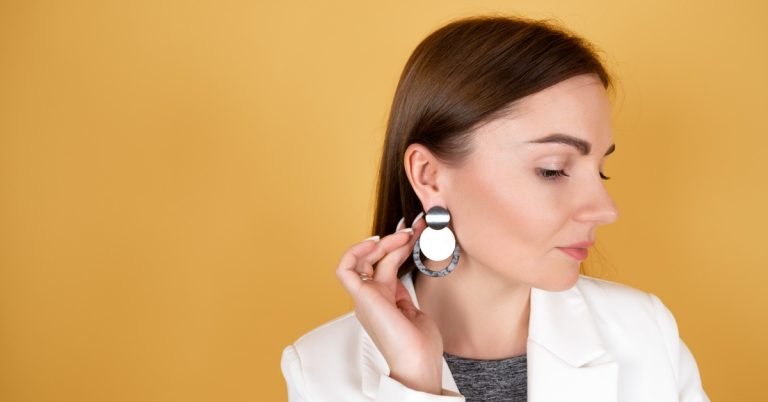When Can You Change Earring After Piercing
As much as getting a new piercing can be thrilling, the aftercare process can be daunting and confusing. One of the most common questions that many people ask is when they can change their earrings after piercing. After all, who doesn’t love the idea of upgrading their jewelry and flaunting a new pair of earrings?
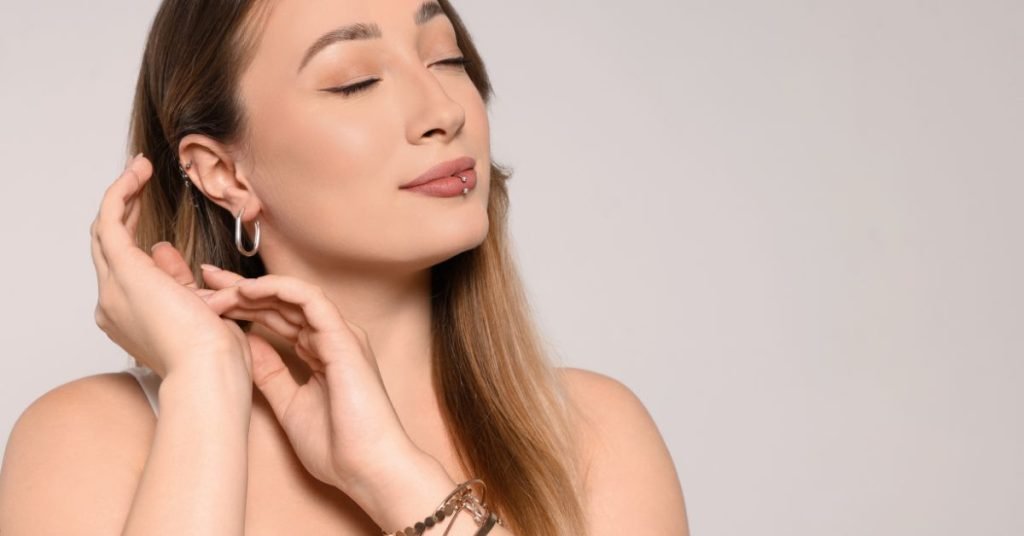
However, it’s crucial to wait until your piercing has healed completely before removing the starter stud. In this blog post, we’ll explore everything you need to know about changing your earrings after piercing, including when to do it safely and how to avoid complications. Also see our post on Are plastic earrings safe and Are screw back earrings better for more great tips. So, let’s get into it!
Table of Contents
1. Ear Piercing Healing Time
Congratulations on getting your ears pierced! It’s natural to be excited about changing your earrings to show off your unique style. However, it’s important to let your piercing heal properly before changing your earrings. The healing time for an ear piercing varies depending on how well you take care of it.
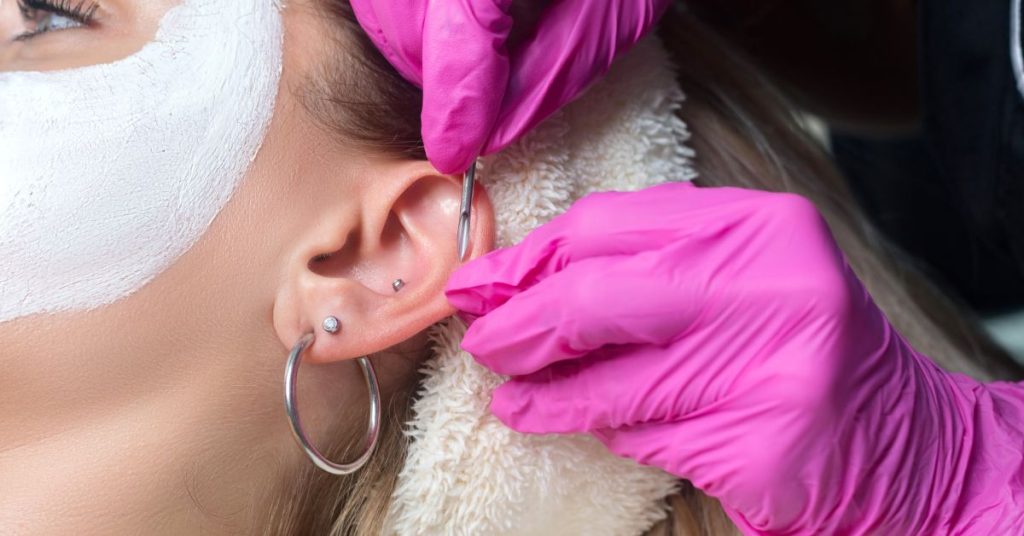
Generally, it takes at least six weeks for the piercing to fully heal. During this time, your earlobes may feel sore and swollen, and there may be some redness and discharge. To speed up the healing process, make sure to clean your piercing regularly and avoid touching it with dirty hands.
Remember to be patient and wait until your piercing is fully healed before changing your earrings. By doing so, you’ll avoid potential infections and ensure that your piercing stays healthy in the long run.
Next, it’s important to understand the different stages of ear piercing healing. The first stage is the inflammatory phase, which lasts about two to four days after the piercing. You may experience pain, swelling, and redness during this time.
The second stage is the proliferative phase, which can last several months. In this stage, your body produces new skin in the wound to repair the piercing. The final stage is the remodeling phase, which can take up to a year to complete.
-
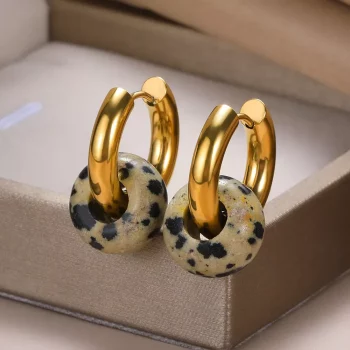 Women’s Natural Stone Hoop Earring$21.49
Women’s Natural Stone Hoop Earring$21.49 -
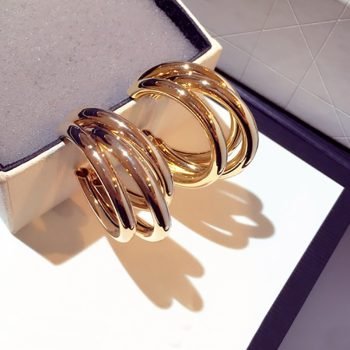 Women’s Fashion Chunky Hoop Earrings$15.00
Women’s Fashion Chunky Hoop Earrings$15.00 -
Product on sale
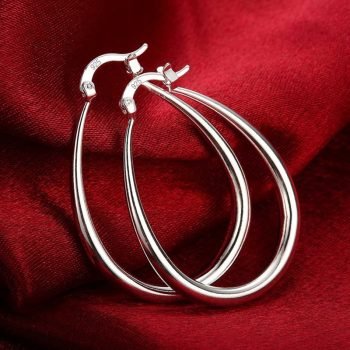 Women’s 925 Sterling Silver Oval Hoop EarringsOriginal price was: $29.00.$15.00Current price is: $15.00.
Women’s 925 Sterling Silver Oval Hoop EarringsOriginal price was: $29.00.$15.00Current price is: $15.00. -
Product on sale
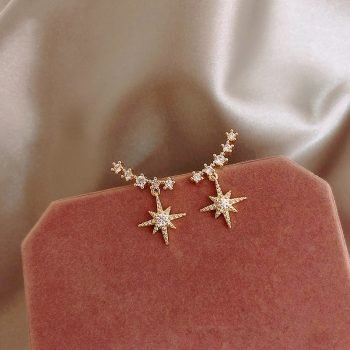 Women’s Star EarringsOriginal price was: $23.00.$15.00Current price is: $15.00.
Women’s Star EarringsOriginal price was: $23.00.$15.00Current price is: $15.00. -
Product on sale
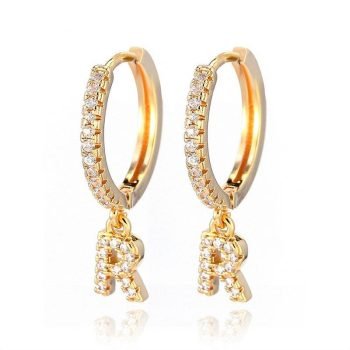 Women’s Initial Letter Hoop EarringsOriginal price was: $33.00.$15.00Current price is: $15.00.
Women’s Initial Letter Hoop EarringsOriginal price was: $33.00.$15.00Current price is: $15.00. -
Product on sale
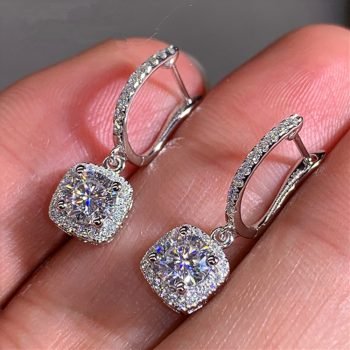 Women’s Crystal Drop EarringsOriginal price was: $27.00.$15.00Current price is: $15.00.
Women’s Crystal Drop EarringsOriginal price was: $27.00.$15.00Current price is: $15.00.
During this stage, your earlobe adjusts to the presence of the earring and strengthens the tunnel around it. Remember to follow your piercing professionals’ advice on when it’s safe to change your earrings to avoid disrupting the healing process.
Lastly, taking care of your piercing is crucial in ensuring it heals properly and minimizing the risk of infections. Choose hypoallergenic and high-quality earrings to avoid irritating your piercing.
Clean your earlobe and earring regularly with saline solution or gentle soap and warm water. Avoid touching your ear or twisting your earring, and don’t remove your starter earring until your piercing is fully healed.
If you experience any signs of infection, such as severe pain or discharge, seek medical attention immediately. By following proper aftercare, you’ll be able to safely change your earrings and enjoy your beautiful new piercing.
2. Piercing Aftercare Instructions
Congratulations on your new ear piercing! One of the most exciting parts of getting a piercing is the opportunity to choose your favorite earrings. However, it’s important to wait until your piercing is healed before changing your jewelry.
The healing process typically takes around six weeks, but everyone’s body is different so it could take longer. Be patient and diligent in your aftercare routine to avoid infection and ensure a smooth healing process.
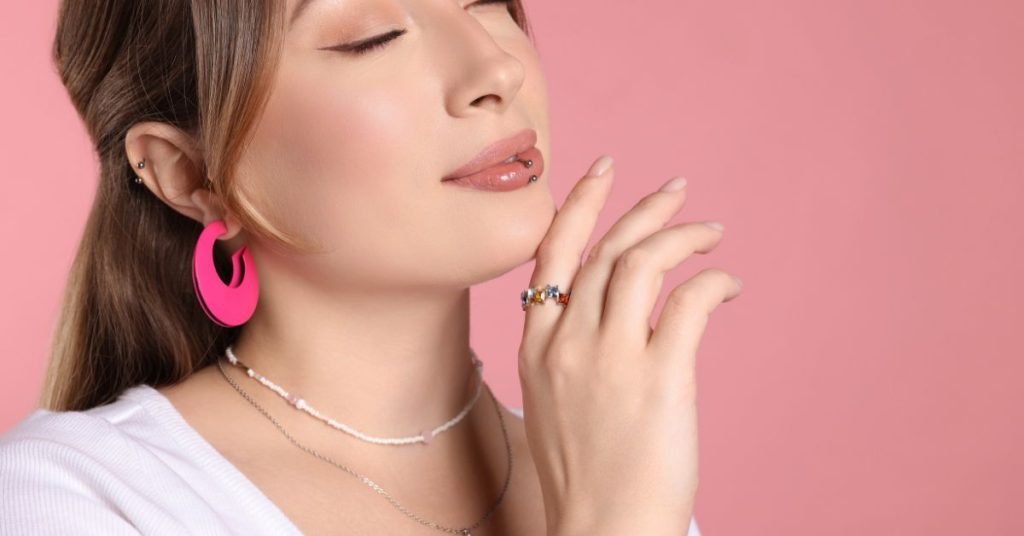
To care for your new piercing, it’s important to clean it regularly with a sterile solution like saline. Be sure to choose high-quality earrings made of materials like gold, sterling silver, or surgical-grade stainless steel to avoid irritation or infection.
It’s also important to avoid removing your earrings until your piercing is fully healed, as this could cause the hole to close up or become infected. If you’re unsure about whether your piercing is healed, ask your piercer or a medical professional to assess it.
If you’re looking for an easy and convenient way to care for your piercing, consider using Dr. Piercing Aftercare swabs. These medicated swabs are designed to promote healing and prevent infection, and they’re packaged for easy, sanitary application.
With regular use of these swabs, you can help expedite the healing process and keep your new piercing looking its best. Remember to be patient and diligent in your aftercare routine, and enjoy the process of choosing your perfect pair of earrings once your piercing is fully healed!
3. How to Keep Your Piercing Clean
You’ve just gotten your ears pierced, and you can’t wait to start changing up your earrings. But before you do, it’s important to take care of your piercing and let it heal properly. The healing process for ear piercings consists of three stages: the inflammatory stage, the proliferative stage, and the remodeling stage.
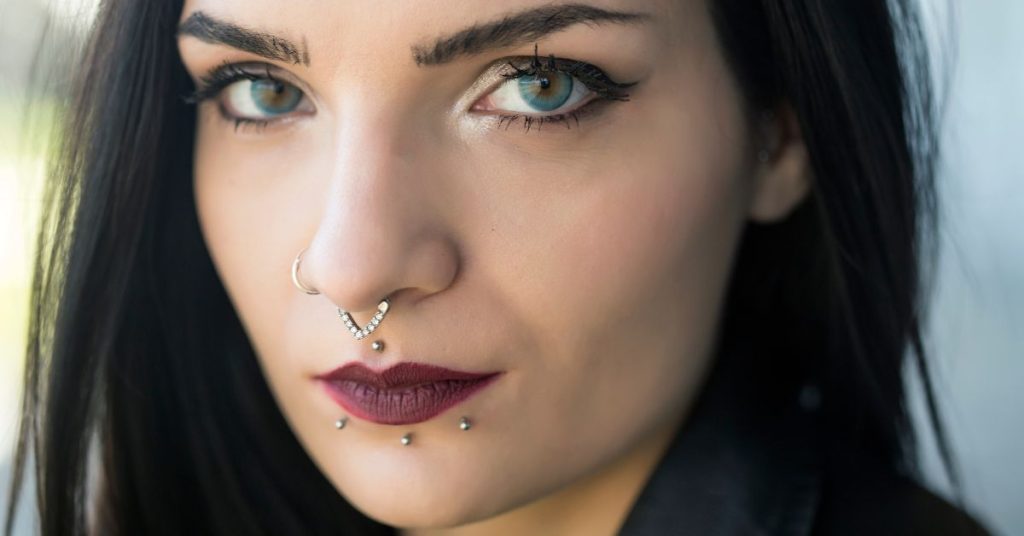
To ensure that your piercing heals properly, it’s important to keep it clean and avoid touching it with dirty hands. This can be achieved with a saline solution, which should be used for at least three times daily for the first few weeks. It’s important to use the right cleaning solution to avoid irritation and infections.
4. Best Type of Earrings to Wear After Piercing
Congratulations on getting your ears pierced! Now comes the exciting part of picking out earrings to show off your new piercings. But wait, what type of earrings are best to wear after piercing? To ensure your piercing heals properly, it is recommended to only use hypoallergenic and nickel-free jewelry.

Choosing high-quality metals such as gold, platinum, or titanium earrings will help prevent irritations and allergies. Steer clear of cheap jewelry that can cause infections or slow down the healing process.
Remember, your ears are healing wounds and require proper care and attention. So, invest in quality earrings to ensure a smooth and healthy healing process.
5. When to Change Earrings After Piercing
After getting your ears pierced, taking care of the piercing is crucial. It is recommended that you change your earrings after at least six weeks after getting your piercing, as within this period, the wound created by the piercing will have healed, and it is safe to remove the old earrings and wear new ones.
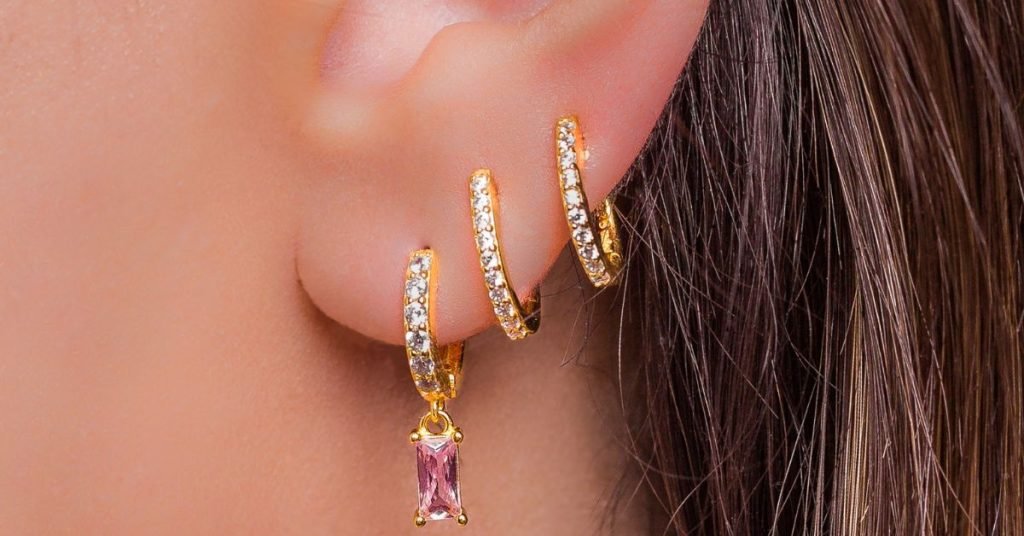
However, this period may vary for each individual, and it is important to avoid changing earrings if you still feel pain and irritation. Always prioritize your ear piercing aftercare plan as this determines how well your wound will heal, and, consequently, when you can safely change your earrings.
Choosing the right earrings is an important step in your aftercare plan. Your aftercare plan should begin immediately after receiving your ear piercing. This means settling for quality earrings made of gold or other hypoallergenic metals.
These materials have properties that ensure you do not experience irritations and allergies that may be difficult to handle. During the first few weeks, make it a priority to keep your piercing clean and avoid touching your ears, even when they feel itchy. If you had helix or other unusual piercings, keeping them clean is especially vital.
It is important to avoid the temptation of premature earring removal. Give your ears enough time to heal as removing your earrings before the wound is fully healed may lead to more complications, including infection and crooked tunnels.
Hence, it’s crucial to wait for your ears to heal entirely before you can change your earrings. Following proper care guidelines will enable you to enjoy the joys of wearing your preferred jewelry after the wound is fully healed. Remember, caring for your piercings is a long-term commitment.
-
Product on sale
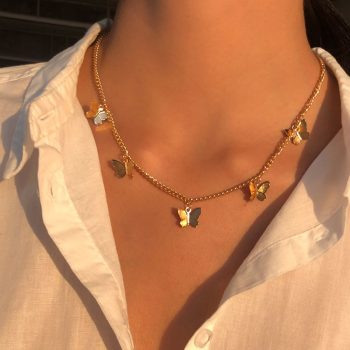 Gold Chain Butterfly Pendant Choker for WomenPrice range: $12.00 through $15.00
Gold Chain Butterfly Pendant Choker for WomenPrice range: $12.00 through $15.00 -
Product on sale
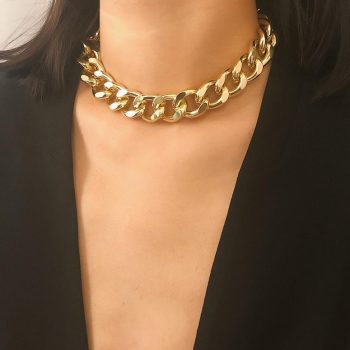 Stylish Women’s Thick Gold Chain NecklaceOriginal price was: $23.00.$15.00Current price is: $15.00.
Stylish Women’s Thick Gold Chain NecklaceOriginal price was: $23.00.$15.00Current price is: $15.00. -
Product on sale
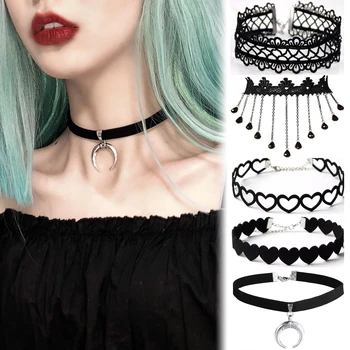 Gothic Velvet Choker Necklace for WomenOriginal price was: $45.00.$15.00Current price is: $15.00.
Gothic Velvet Choker Necklace for WomenOriginal price was: $45.00.$15.00Current price is: $15.00. -
Product on sale
 Crystal Geometric Women Charm NecklacePrice range: $10.00 through $12.00
Crystal Geometric Women Charm NecklacePrice range: $10.00 through $12.00 -
Product on sale
 Hollow Star Pendant Necklace For WomenOriginal price was: $21.00.$10.00Current price is: $10.00.
Hollow Star Pendant Necklace For WomenOriginal price was: $21.00.$10.00Current price is: $10.00. -
Product on sale
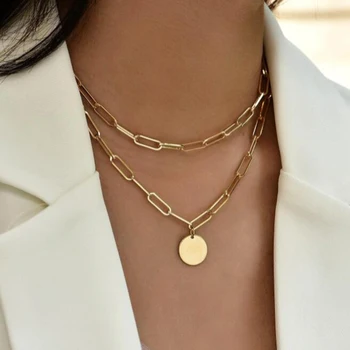 Charm Layered Necklace for WomenPrice range: $10.00 through $12.00
Charm Layered Necklace for WomenPrice range: $10.00 through $12.00
During the appointment, our nurse will guide you on selecting the best aftercare solution and review when you can change your earrings. Remember, an ear piercing is a puncture wound that undergoes three stages of wound healing: inflammatory, proliferative, and remodeling.
The remodeling phase starts six months after piercing and continues up to a year, requiring long-term care and precautions to prevent infection or other issues.
To ensure a safe and healthy healing journey, make sure to follow the wait times recommended for changing earrings per piercing type. Generally, you can change your starter earrings for another pair after 30 days of downsizing and at 6-10 weeks if you do not experience soreness.
In general, 30% of those who get ear piercings have poor outcomes, with complications such as infection, due to low-quality jewelry or unsafe piercing practices. This makes it essential to choose safe piercing practices and always prioritize the welfare of your ears.
6. Piercing Wait Time for Different Earrings
When you get your ears pierced, you’re probably eager to change into your favorite pair of earrings. However, it’s important to be patient and let your piercings heal first. The wait time for changing earrings depends on the type of piercing you have.
For earlobe piercings, it’s recommended that you wait at least six to eight weeks before changing earrings. If you’ve gotten a cartilage piercing, you should wait up to 12 weeks. It’s important to follow these wait times to ensure that your piercings heal properly, without any infection or irritation.

Once your piercings have fully healed, you have a wide variety of earrings to choose from. It’s important to select earrings made from hypoallergenic materials, such as gold, platinum or titanium.
These materials are less likely to cause allergies or irritation. Additionally, it’s recommended to avoid earrings with sharp edges or pointed ends that can catch on clothing or hair. Instead, opt for smooth and rounded earrings that will be comfortable to wear throughout the day.
When the wait time has passed and you’re ready to switch out your earrings, make sure to use clean hands and clean jewelry. Changing into unclean jewelry can cause irritation, infections, and other complications.
It’s also recommended that you take your time when changing earrings, avoiding any excessive pulling or twisting. Remember, the key to changing earrings successfully is to be patient and gentle with your piercings, allowing them to fully heal after the piercing procedure.
7. Importance of Hypoallergenic Materials
After getting your ears pierced, choosing the right jewelry is important to ensure that the healing process goes smoothly. It’s recommended to opt for hypoallergenic materials to avoid any allergic reactions or irritations. Hypoallergenic materials such as surgical steel, titanium, and 14K gold are safe choices for new piercings.
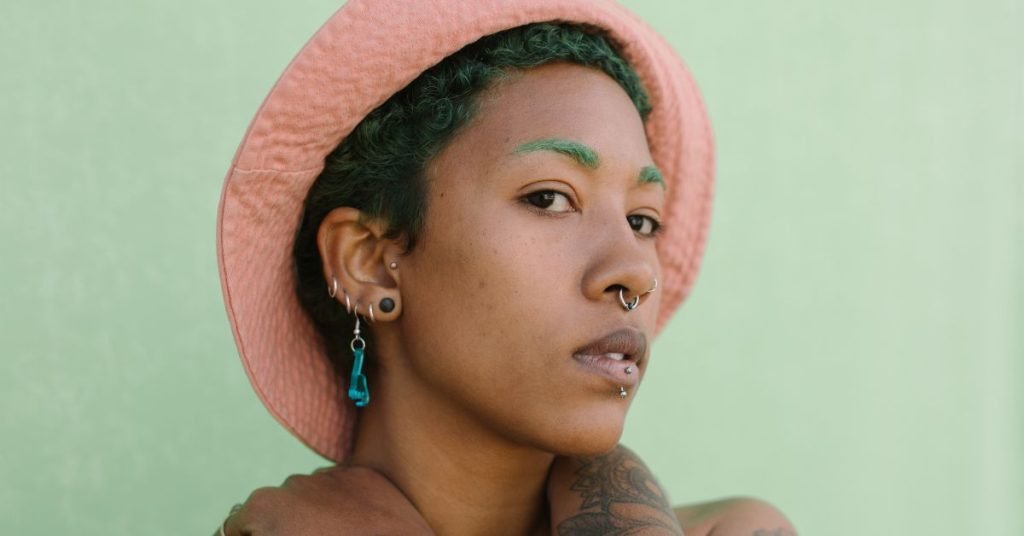
When choosing earrings, it’s best to stick to simple studs or small hoops during the healing process to minimize stress on the piercing. Avoid wearing dangling or heavy earrings until your piercing has fully healed. Heavy earrings can cause trauma to the piercing and cause it to heal improperly.
Using hypoallergenic materials is particularly important for those with sensitive skin. Earrings made with nickel or other cheap metals can cause skin irritations or allergic reactions that can prolong the healing process. Opting for high-quality, hypoallergenic materials can prevent complications and ensure a smooth healing process.
Typically, after getting your earlobes pierced, the wait time before changing earrings is around 6-8 weeks. However, it’s important to wait until your piercing feels fully healed before changing your earrings. Cartilage piercings require more time to heal, and the recommended wait time before changing earrings may be longer.
-
Product on sale
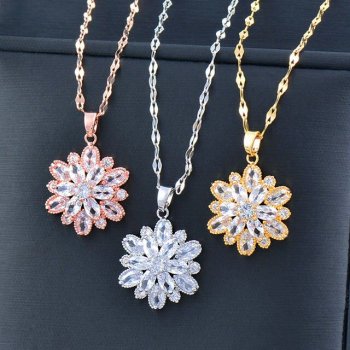 Womens Gold-Plated Crystal Flower Pendant ChokerOriginal price was: $11.73.$8.80Current price is: $8.80.
Womens Gold-Plated Crystal Flower Pendant ChokerOriginal price was: $11.73.$8.80Current price is: $8.80. -
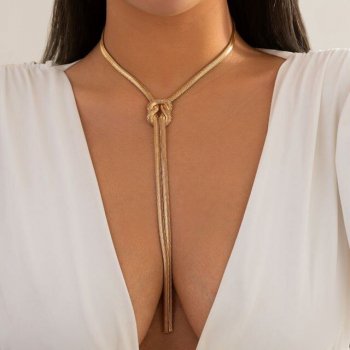 Tassel Twist & Flat Snake Chain Chunky Necklace$9.65
Tassel Twist & Flat Snake Chain Chunky Necklace$9.65 -
Product on sale
 Stress Relief Breathing Necklace (Not a Whistle)Original price was: $17.72.$15.95Current price is: $15.95.
Stress Relief Breathing Necklace (Not a Whistle)Original price was: $17.72.$15.95Current price is: $15.95. -
Product on sale
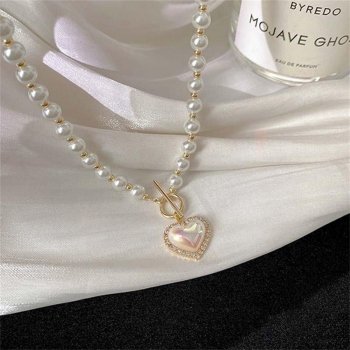 Vintage Heart Pendant Pearl NecklaceOriginal price was: $13.11.$10.49Current price is: $10.49.
Vintage Heart Pendant Pearl NecklaceOriginal price was: $13.11.$10.49Current price is: $10.49. -
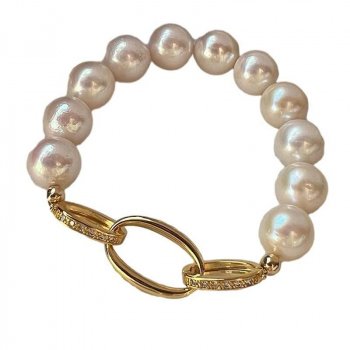 Chic Crystal & Pearl Hand Catenary Fashion Mood Tracker Bracelet$9.49
Chic Crystal & Pearl Hand Catenary Fashion Mood Tracker Bracelet$9.49 -
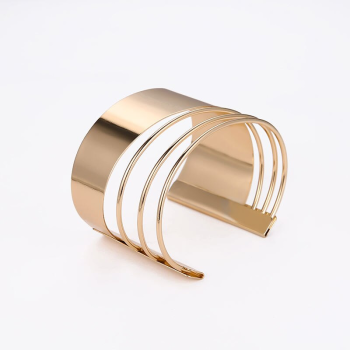 Women’s Bohemian Gold-Plated Geometric Cuff Bangle$15.65
Women’s Bohemian Gold-Plated Geometric Cuff Bangle$15.65 -
Product on sale
 Trendy Punk Style Gold-Plated Geometric Womens BangleOriginal price was: $13.83.$8.99Current price is: $8.99.
Trendy Punk Style Gold-Plated Geometric Womens BangleOriginal price was: $13.83.$8.99Current price is: $8.99. -
Product on sale
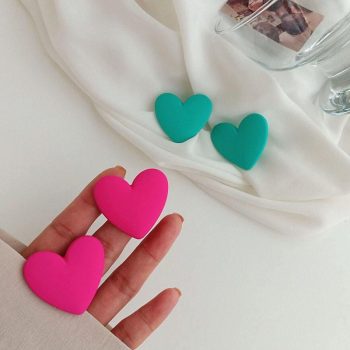 Colorful Heart-Shaped Acrylic Earrings for WomenOriginal price was: $11.73.$8.80Current price is: $8.80.
Colorful Heart-Shaped Acrylic Earrings for WomenOriginal price was: $11.73.$8.80Current price is: $8.80. -
Product on sale
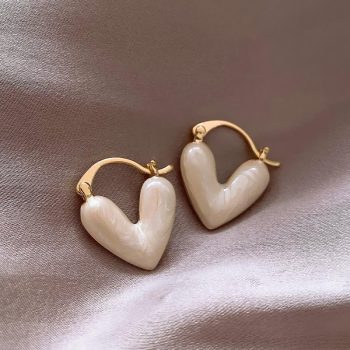 Elegant Heart Small Drop Earrings for WomenOriginal price was: $11.86.$9.49Current price is: $9.49.
Elegant Heart Small Drop Earrings for WomenOriginal price was: $11.86.$9.49Current price is: $9.49.
Remember that the healing time for piercings can vary depending on factors such as the location of the piercing and the type of jewelry used. Pay attention to your body and give your piercing the time it needs to heal, even if it takes a little longer than expected.
In summary, choosing the right jewelry is crucial to ensure a smooth healing process after getting your ears pierced. Opt for hypoallergenic materials and stick to simple earrings to avoid complications. Wait until your piercing is fully healed before changing your jewelry, and give your piercing the time it needs to heal properly.
8. How to Prevent Infection in Piercings
In order to prevent infection in your new piercing, there are several important steps you should take. First and foremost, make sure to keep your piercing site clean and dry.
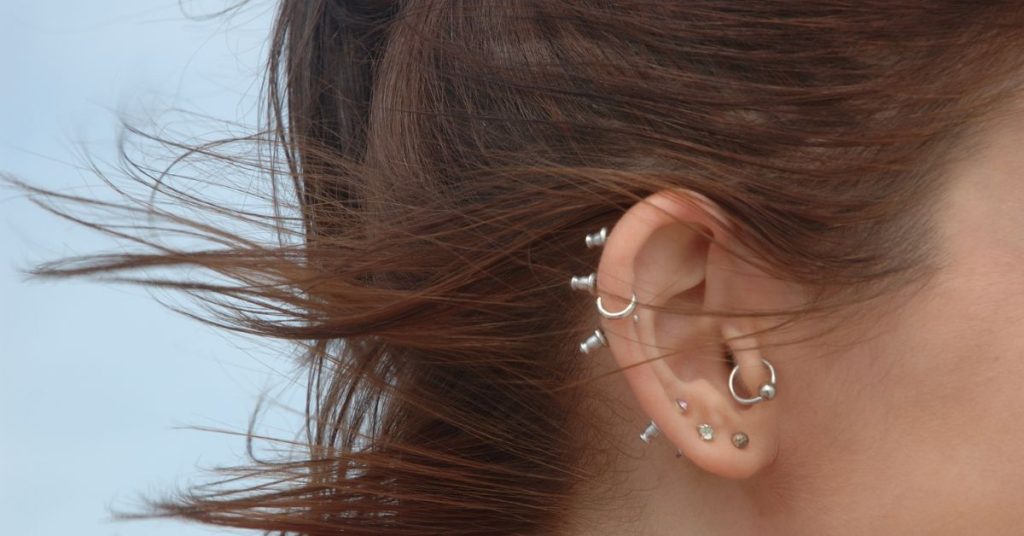
This means washing the area twice a day with a saline solution or piercing aftercare spray, which can help ward off bacteria and other harmful microorganisms. You should also avoid touching your piercing site with dirty hands, as this can introduce germs and increase your risk of infection.
Another important tip is to avoid submerging your piercing site in water for the first few weeks after getting your ears pierced. This includes swimming in pools, lakes or hot tubs, as well as taking baths or showers. Water exposure can increase your risk of infection, as the moisture can allow bacteria to thrive and spread.
Choosing the right jewelry is also important for preventing infection. Make sure to opt for earrings made from hypoallergenic materials, such as titanium or surgical-grade stainless steel, to minimize the risk of allergic reactions or irritation. Avoid earrings made of cheap metals that may contain nickel, which can cause an allergic reaction in some people.
In addition to these precautions, it’s important to monitor your piercing site for signs of infection. Look for redness, swelling, tenderness, or discharge, as well as any itching or rash around the piercing. If you notice any of these symptoms, make sure to visit a healthcare professional or your piercing studio for further guidance and treatment.
By taking these steps, you can minimize your risk of infection and ensure that your new ear piercing heals properly. Remember to follow proper aftercare guidelines and prioritize your health and safety throughout the healing process.
9. Reasons for Waiting to Change Earrings
Waiting to change your earrings after getting a new piercing is critical for the overall health of the piercing. There are several reasons for this.
First, your body needs time to heal the puncture wound created by the piercing. Changing your earrings too soon could disrupt the healing process, making it take longer for the wound to close fully.
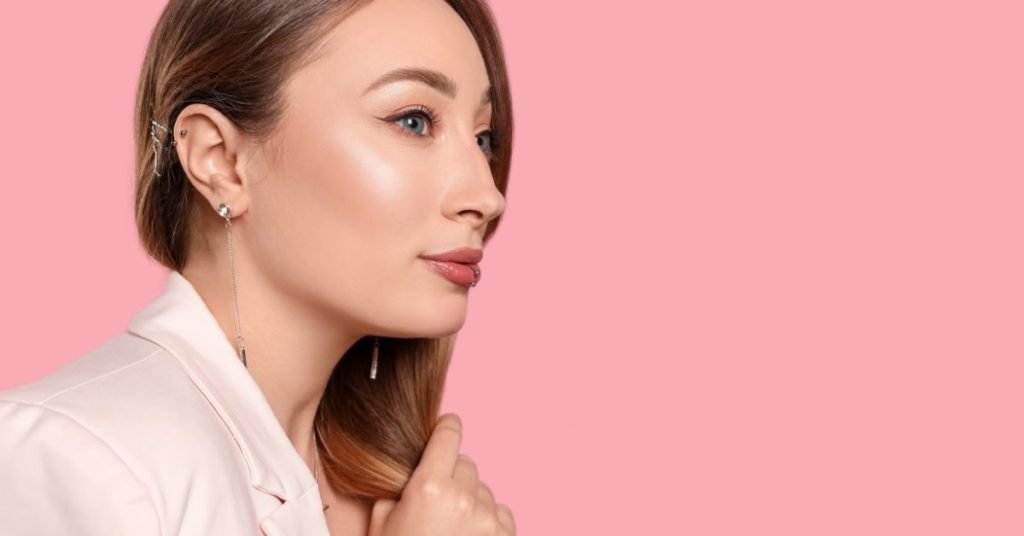
Second, if you change earrings too soon, you risk introducing harmful bacteria into the wound, which can lead to infections.
Third, if you change your earrings too soon, you run the risk of irritating the wound, causing it to become inflamed and painful.
Finally, even if you are eager to change your earrings, it is essential to remember that each person’s healing process is unique, and some may require longer than six weeks before they can safely change their earrings.
10. When Can You Change Earring After Piercing – Risks of Premature Earring Removal
Removing your earrings prematurely after an ear piercing can be quite tempting. You might be eager to show off your new pair of earrings or simply bored of wearing the same studs. However, it’s important to remember that changing your earrings before the wound heals completely can be risky.
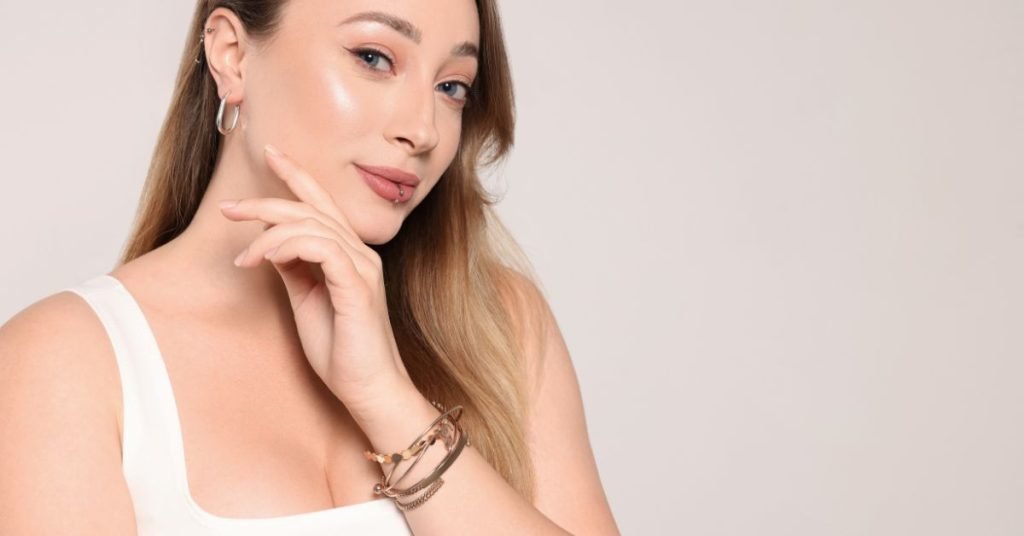
Doing so can increase the risk of infection, since the wound is still fresh and vulnerable. You may also experience pain, swelling, or bleeding if you remove your earrings too soon. Additionally, removing your earrings prematurely can cause the hole to close up, forcing you to get another piercing.
It’s important to be patient and allow your piercing to heal completely before changing your earrings. This is usually around 6-8 weeks for earlobe piercings and up to 12 weeks for cartilage piercings. It might be tempting to change them earlier, but it’s better to be cautious and avoid any complications.
To avoid the risks associated with premature earring removal, it’s crucial to follow the aftercare instructions of your piercer. This includes cleaning the piercing regularly, avoiding touching it with dirty hands, and avoiding swimming or other activities that may introduce bacteria.
Taking the time to care for your piercing properly will help ensure a smooth healing process and safe earring changes down the line.



